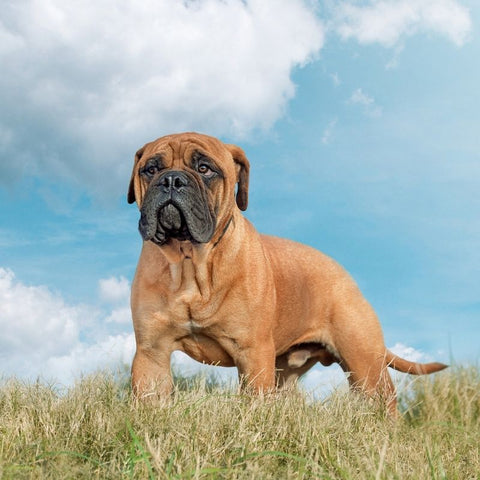Carrie Pallardy

Bullmastiffs and mastiffs are often lumped in together, but these dogs actually belong to two distinct breeds. Bullmastiffs are the smaller of the two breeds. Bred as guard dogs, these canines retain a strong sense of loyalty and territoriality today. Is a Bullmastiff right for you?
Gamekeepers’ Best Friend
Sprawling English estates weren’t just bucolic retreats for the aristocracy of the 1800s. They were also magnets for poachers, drawn by the abundant game. Gamekeepers of the time found the solution in breeding Bulldogs and Mastiffs, resulting in the Bullmastiffs, according to the American Bullmastiff Association. These dogs helped gamekeepers to track down and apprehend poachers. Unlike many other guard dog breeds, Bullmastiffs are quiet and not prone to biting. Rather, they would stalk and pin poachers, according to the American Kennel Club (AKC).
Bullmastiffs have come a long way from their roots as gamekeeper companions. Since then, they have become loyal pets and companions to quite a few recognizable names, Sylvester Stallone among them. His Bullmastiff Butkus appeared in two of the Rocky movies.
A Formidable Breed

If a dog is bred to pin down poachers, it is going to be sizeable. Male Bullmastiffs can grow to be as heavy as 130 pounds, with females reaching an only slightly smaller maximum of 120 pounds, according to the AKC. Both males and females can reach heights of greater than two feet when measured from the shoulder to the floor. While large, Bullmastiffs are not clumsy. There is a graceful physicality to the breed. These dogs typically live seven to nine years.
The Bullmastiff Personality
Bullmastiffs can make great pets, particularly because they are loyal to their human companions. They may also learn to be gentle and protective of children. But the guard dog tendencies of the Bullmastiff come with some considerations. These dogs do not typically get along with other male dogs, and they are territorial, according to The Spruce Pets. Keep this in mind when your Bullmastiff socializes with other animals and runs off leash.
Caring for a Bullmastiff

Bullmastiffs have a history as working dogs, but they do not have such a high energy drive that you need to constantly provide physical and mental stimulation. Daily walks can be sufficient for some of these dogs, who will be content to lounge with you at home afterward.
Dogs of this breed come in a few different shades, including red, fawn, and brindle. They might have black markings along their muzzle and around their eyes. Bullmastiffs have close coats with minimal shedding. Regular baths and brushing are an important part of their care.
The American Bullmastiff Association has resources for pet owners looking to adopt or buy from a breeder.
Sources:
